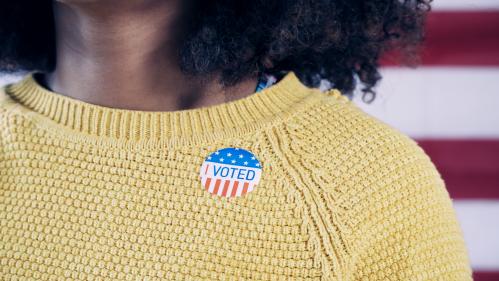New Center for American Women and Politics Data: Women Outvote Men, Men Outgive Women; Uphill Battle for Women of Color Who Run as Republicans

Women out-vote men, but women do not out-donate men, according to a new report from the Center for American Women and Politics (CAWP), a unit of the Eagleton Institute of Politics at Rutgers University. In The Money Race for the State Legislature, CAWP researchers Kira Sanbonmatsu and Claire Gothreau found that men out-gave women 2 to 1 in all state legislative contests. However, elections with women candidates appear to mobilize women donors; women donors were more likely to give to candidates in contests with at least one woman candidate. The report examines individual contributions to state legislative candidates in the 2020 general election. This is the third report in CAWP’s series Women, Money, and Politics, undertaken in collaboration with OpenSecrets
Key findings from The Money Race for the State Legislature report include the following:
Money Matters
In the 2020 election, more men than women donated to general election candidates, and the total amount contributed by men exceeded the total amount contributed by women. To the extent that campaign contributions can impact state legislative agendas and public policies, women are not exercising equal voice in state legislative politics.
But candidate gender, donor gender, and political party interact. Women were more likely to contribute to Democratic than Republican candidates, and within both parties, women were more likely to give to women candidates than men candidates.
Where the Donors Live
The report focuses on 2020 state legislative races and finds significant differences among states. Arkansas saw only about one-quarter of contributions come from women donors, while Colorado and Connecticut saw almost 50% of contributions made by women. CAWP previously reported that in 2021 Arkansas’s legislature was made up of only 23% women while in Colorado and Connecticut women’s representation was 45% and 33.7% respectively. In addition, the top half of states in women’s state legislative representation were more likely to have a higher share of women contributors (39%) than the states that are lower on women’s state legislative representation (an average of 34%), suggesting evidence of gender affinity in donating. .
Few Women of Color Run as Republicans
The report finds that very few women of color run for state legislatures as Republicans. While women of color are much less likely to be Republican, those who do run for office are usually financially disadvantaged compared with Republican women candidates who are white. The report also says that this data suggests the small number of candidates who are Republican women of color are not being nominated in the most competitive districts. Only 25 women of color serving as state legislators in 2021 identify as Republicans compared with 580 who identify as Democrats.
Other findings:
- Where there were gender differences in the amount of money raised from small contributions, women usually raised more from small contributions than their male opponents. Raising money in smaller denominations may require more time than raising money in larger denominations.
- Most Democratic women of color candidates raised similar amounts to Democratic white women candidates.
- Democratic women fared better in fundraising than Republican women.
- Men were more likely to contribute to their own campaigns than women.
“For the past 50 years CAWP’s mission has been to get more women involved in politics,” says CAWP senior scholar and report co-author Kira Sanbonmatsu. “It’s encouraging that women outvote men. But there are more opportunities for women to get involved, and not just at the ballot box. By giving, women can help shape policies in their state. The time is now to expand the diversity of women in politics and government.”
Despite women’s consistent underrepresentation as state legislative candidates and officeholders, there are a record number of women serving in state legislatures as a result of the 2020 election. Latinas and Black, Asian American, and Native American women are particularly underrepresented, which is consistent with other levels of office.
The Money Race for the State Legislature report was written with support from Pivotal Ventures, an investment and incubation company founded by Melinda French Gates and is available to read in full at CAWP’s Research and Scholarship page. All the reports in CAWP’s Women, Money, and Politics series can be found here.
More Recent Reports
The CAWP recently released another report, Reaching Higher: Black Women in American Politics 2021, with Higher Heights Leadership Fund. The report illustrates:
- A record number of Black women ran for and won congressional offices in 2020, but Black women’s congressional representation is not at a record high. Most acutely, no Black women currently serve in the U.S. Senate.
- Between 2020 and 2021, Black women’s state legislative representation increased, though not as much as it did after the 2018 election. Black women reached a record high in state legislative representation in 2021.
- Despite being 7.8% of the population, Black women are less than 5% of officeholders elected to statewide executive offices, Congress, and state legislatures. They are 8 of the mayors in the nation’s 100 most populous cities.
- Black women remain severely underrepresented as officeholders at the statewide executive level, holding just 1.9% of these positions. Just 17 Black women have ever held statewide elected executive offices, and no Black woman has ever been elected governor despite the first-ever major party nomination of a Black woman for governor in election 2018.
Read the full report.



